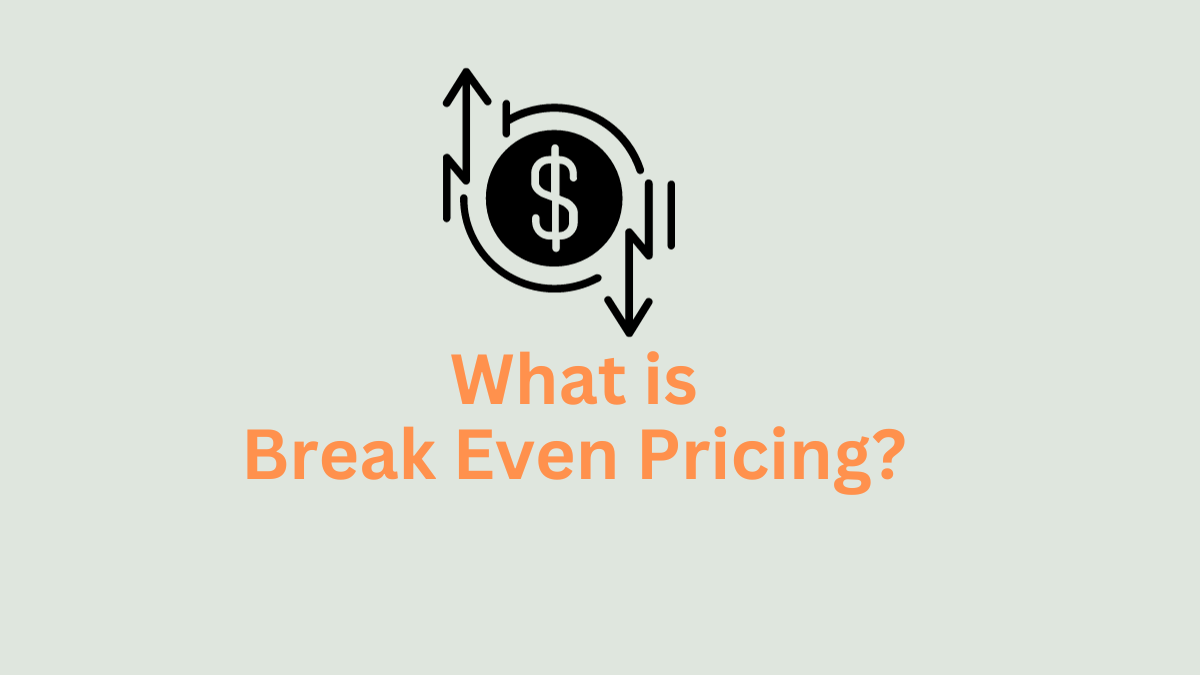What is Break Even Pricing?
Break even pricing is a method that helps businesses determine the price at which they neither make a profit nor suffer a loss on a sale. It’s the point where total revenue matches total costs. This pricing approach is often used to gain market share and potentially reduce costs for higher profits.
In simple terms, break-even pricing is about finding the balance between your fixed costs (like rent and insurance) and variable costs (such as materials and labor). The formula is straightforward: Break-Even Price = (Total Fixed Costs + Total Variable Costs) / Number of Units Sold.
This strategy can serve as a competitive tool, making it harder for rivals to compete with your low prices. It’s also useful for understanding the lowest acceptable price, helping sellers respond to price-sensitive customers.
In summary, break-even pricing is about setting a price that covers all costs without making a profit, with the potential to dominate the market or maintain profitability at a later stage.
How To Calculate Break Even Price?
Calculating the break-even price is a vital aspect of business decision-making. It helps you determine the minimum price at which you need to sell your product to cover all costs and avoid losses. The formula for the break-even price is:
Break-Even Price = (Total Fixed Costs / Production Volume) + Variable Cost per Unit
Let’s break it down with an example:
Suppose you run a bakery and have fixed costs of $5,000 per month, including rent and utilities. Your variable cost per unit, which includes ingredients and labor, is $2 per cake. To calculate your break-even price, you need to know your monthly production volume.
Let’s say you typically produce 1,000 cakes per month:
Break-Even Price = ($5,000 / 1,000) + $2 = $5 + $2 = $7 per cake
Read More: Target Return Pricing
In this example, you must sell each cake for at least $7 to cover all your costs and avoid losses. Selling below $7 means you’ll operate at a loss, and selling above $7 contributes to your profit.
Calculating the break-even price is a crucial step in pricing strategy, allowing you to make informed decisions about product pricing and business profitability.
Pros of Break-Even Pricing Strategy
Break-even pricing has several advantages that make it a useful strategy for businesses. Let’s break down these pros in simple terms:
Risk Control
Break-even pricing helps businesses control risks. By setting a price that covers all their costs, they avoid operating at a loss. This stability is like a safety net, ensuring they don’t fall into a financial pit.
Read More: Markup Pricing – Definition
Market Share Growth
Offering products at or near the break-even price can attract more customers. It’s like a tasty bait that lures fish to your hook. Once you’ve reeled them in, you can work on keeping them as loyal customers.
Competitor Disruption
Low prices can disrupt the competition. Think of it as a surprise party for your competitors. When they least expect it, you enter the market with attractive prices, shaking up their strategies and making it harder for new competitors to enter.
Cost Reduction Opportunity
As your sales volume increases due to lower prices, you can take advantage of economies of scale. This means you can make more products with lower costs per unit, like buying in bulk at a lower price per item.
Read More: 3 Objectives of Pricing in Marketing
Market Dominance
With time, if you maintain break-even pricing and control your costs, you can dominate the market. It’s like slowly taking over a game board. Once you control the majority of the board, it becomes challenging for others to compete.
Cons of Break-Even Pricing
Break-even pricing offers benefits, but it’s not without its downsides. Let’s simplify the cons in four points:
Limited Profit Margins
Break-even pricing might keep you afloat, but it’s like treading water in a pond. You’re not sinking, but you’re not getting ahead either. With slim profit margins, it can be challenging to invest in growth or innovation.
Read More: Factors Affecting Product Pricing
Price Perception Issues
Offering low prices for too long can create the perception that your product is cheap or of lower quality. It’s like a movie with a low budget – some might think it’s not as good as the big productions.
Competitive Price Wars
When your competitors see you lowering prices, they may join the battle. This results in a price war, where everyone lowers prices, and nobody wins. It’s like a never-ending tug of war, and you’re all stuck in the middle.
Sustainability Challenges
Operating at or near the break-even point for an extended period can strain your resources. It’s like running a marathon without enough water stops. Eventually, you might run out of energy and have to drop out.
Read Next: The 10 Importance of Pricing in Business
Arti Kushmi holds a BBS (Bachelor in Business Studies) degree and shares her business and marketing knowledge through this website. While not writing she will be reading and enjoying the moment.
